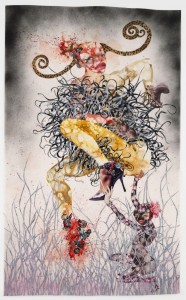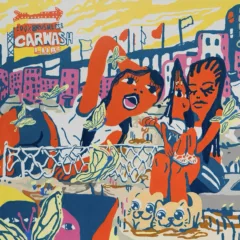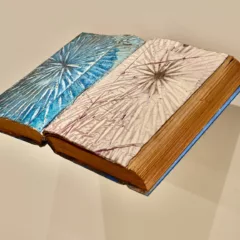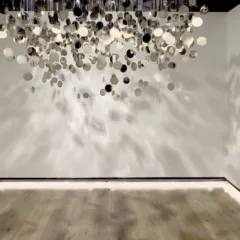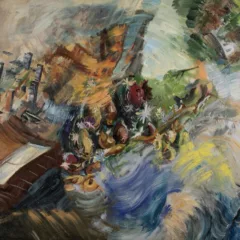–>Andrea tells us about three catalogs whose great design, solid writing and copious illustrations make them a great read and a great encounter with the work. –the artblog editors————————–>
Stefanie Barron with Lauren Bergman Ken Price; A Retrospective (Delmonico Books, Prestel, New York and Munich in association with the Los Angeles County Museum of Art: 2012) ISBN: 978-3-7913-5255-8 This catalog, published by the Los Angeles County Museum of Art (LACMA) is one of the most beautiful art monographs I’ve ever seen, quite beyond the extraordinary, if under-known, work of its subject. West coast artist Ken Price’s first, solo museum exhibition was at the Whitney in 1969, a period when the New York art world was not so xenophobic as it became. This was undoubtedly aided by the fact that Artforum began publication in the West Coast, and on moving to New York in 1967, retained its original editor through 1971. While Price exhibited internationally, it took forty-five years for a second New York museum exhibition devoted to his work. 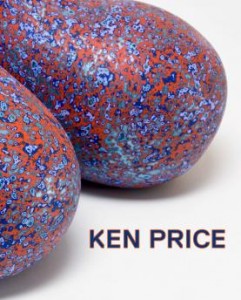 Stefanie Barron provides an overview of the artist’s work and career, with close attention to his media and technique. She discusses his heterodox approach to clay and how Price achieved his characteristic, intensely-saturated, polychrome surfaces. From 1983 on he turned from glazes to a variety of painted surfaces, themselves the product of great invention. Phyllis Tuchman situates Price’s work in relationship to concurrent developments in art, sculpture in particular. There is also an appreciation by Frank O. Ghery (a long-time admirer who designed the exhibition), and an essay by Dave Hickey which supplements biographical material in Barron’s essay and provides a particularly lively picture of a singular artist who pursued his own ideas, rather than worldly success. The book includes artist’s statements drawn from interviews conducted between 1980 and 2011, and a selected anthology of critical writing that established his reputation, published between 1963 and 1970.
Stefanie Barron provides an overview of the artist’s work and career, with close attention to his media and technique. She discusses his heterodox approach to clay and how Price achieved his characteristic, intensely-saturated, polychrome surfaces. From 1983 on he turned from glazes to a variety of painted surfaces, themselves the product of great invention. Phyllis Tuchman situates Price’s work in relationship to concurrent developments in art, sculpture in particular. There is also an appreciation by Frank O. Ghery (a long-time admirer who designed the exhibition), and an essay by Dave Hickey which supplements biographical material in Barron’s essay and provides a particularly lively picture of a singular artist who pursued his own ideas, rather than worldly success. The book includes artist’s statements drawn from interviews conducted between 1980 and 2011, and a selected anthology of critical writing that established his reputation, published between 1963 and 1970.
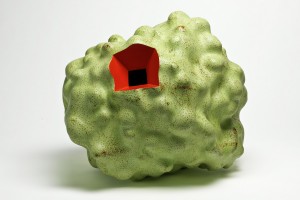
The major impact of the book is certainly due to the splendid illustrations. A grant from the Shifting Foundation enabled LACMA to commission new photographs of all of the work by Frederik Nilson, who did an exemplary job. Illustrations include multiple views of individual pieces and extraordinary details which allow study of Price’s seductive and mysterious surfaces, where the incidental detail usually comes from the paint treatment rather than the sculpted form itself. The book includes a chronology of the artist’s career with parallel illustrations of his work, printed in relative scale. This is a great aid for reading the primary illustrations, and an inspired means of overcoming an inherent problem with reproductions (printed or projected): that everything becomes the same size. The book is beautifully printed, by Trifolio S.r.l., Italy, and designed, by Lorrain Wild and Xiaoquing Wang of Green Dragon Office, down to the cloth binding and colored imprinting, which reflect Price’s palette. More about the book here.

Arnold Mesches: A Life’s Work (Cement House, Gainsville, FL:2013) ISBN 978-0-615-71603-9 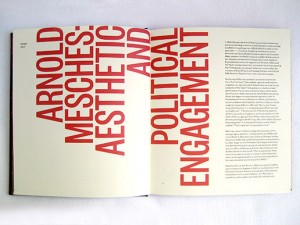 Arnold Mesches (B. 1923) has created a large body of paintings and drawings fueled by anger and he is still at it, at the age of ninety. His anger is directed at social injustice, wars, racism, inept and dishonest politicians, insulated suburbanites, and an art world that wants only art that functions as Matisse’s calming armchair. When Mesches began painting in 1945, the social realism and protest art of the 1930s was passé. So was most figuration. Yet he produced an art of social commitment for almost seventy years, regardless of art world fashions, and his reputation is mostly as an artist’s artist. That questionable honorific has meant the necessity of a day job and fortunately Mesches found work teaching, across the country, culminating with eight years at the University of Florida.
Arnold Mesches (B. 1923) has created a large body of paintings and drawings fueled by anger and he is still at it, at the age of ninety. His anger is directed at social injustice, wars, racism, inept and dishonest politicians, insulated suburbanites, and an art world that wants only art that functions as Matisse’s calming armchair. When Mesches began painting in 1945, the social realism and protest art of the 1930s was passé. So was most figuration. Yet he produced an art of social commitment for almost seventy years, regardless of art world fashions, and his reputation is mostly as an artist’s artist. That questionable honorific has meant the necessity of a day job and fortunately Mesches found work teaching, across the country, culminating with eight years at the University of Florida.
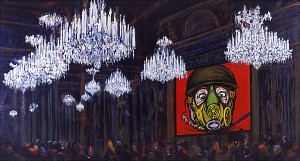
The publication of this monograph was timed to coincide with a large retrospective of Mesches work held at the Miami Dade College Museum of Art and Design, organized by Kim Levin (Feb. 14-May 4, 2013), with further exhibitions in galleries at three branches of the college. It is fully illustrated, all in color. The critical text about the artist is slight, consisting of a mere eight pages in toto. Lowery Stokes Simms and Robert Storr both write short appreciations, more than analyses. Peter Selz discusses Mesches’ career in light of the artist’s experiences, relationships with other artists, and the history of 20th-century art, acknowledging his debt to Surrealism and German Expressionism. He notes parallel interests in work by a number of American and European artists including Leon Golub, Nathan Olivera, Francis Bacon, and a younger generation which includes Anselm Kiefer and others. This leaves the book’s emphasis on the plentiful illustrations, which is what most readers will value. My only complaint is the decision to print labels for the illustrations perpendicular to the images, which requires either turning the book 90 degrees or repeatedly craning one’s neck to read them. More on the catalog here.
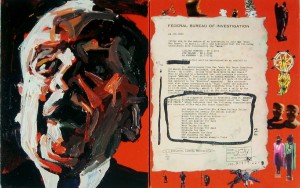
Trevor Schoonmaker, ed. Wangechi Mutu: A Fantastic Journey (Nasher Museum of Art at Duke University, Durham, N.C.: 2013) ISBN 978-0-938989-36-3 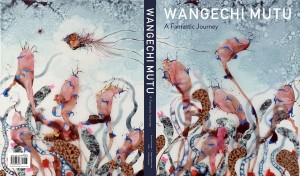 Wangechi Mutu’s art is fueled by social injustice and there is a sense of urgency to it. For a Kenyan-raised woman who studied and works in the U.S., the creation of imagery and her ability to tell the story is bound up with her subjects. Mutu’s art is transcontinental, with images, forms and stories appropriated from wherever suits her purpose, and there’s plenty of suffering, wherever she looks. Her primary medium, until her recent work in video, has been a combination of drawing, watercolor and collage, and her figures are primarily female. Female, but not quite human, her subjects often have elaborately-figured skin and might sport arms that end with something other than hands, or multiple heads. They favor very high-heeled shoes, that is, if their legs don’t end in claws.
Wangechi Mutu’s art is fueled by social injustice and there is a sense of urgency to it. For a Kenyan-raised woman who studied and works in the U.S., the creation of imagery and her ability to tell the story is bound up with her subjects. Mutu’s art is transcontinental, with images, forms and stories appropriated from wherever suits her purpose, and there’s plenty of suffering, wherever she looks. Her primary medium, until her recent work in video, has been a combination of drawing, watercolor and collage, and her figures are primarily female. Female, but not quite human, her subjects often have elaborately-figured skin and might sport arms that end with something other than hands, or multiple heads. They favor very high-heeled shoes, that is, if their legs don’t end in claws.
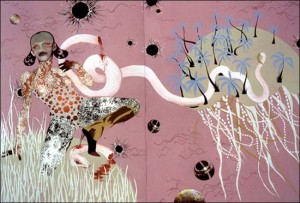
This is an extremely handsome book for an artist who received her MFA in 2000, and brings multiple perspectives to the work. Trevor Schoonmaker discusses the evolution of Mutu’s work and what he terms her transformative aesthetic. He surveys the meanings in her subject matter and her technique, as well as the global reach of her concerns. Mutu’s is not an art of personal identity. Kristine Stiles investigates Mutu’s sources in relation to intersubjectivity, colonialism, feminism and trauma. She speaks of the artist’s exacting reconstruction of shared states of collective subjectivity and cultural agency.
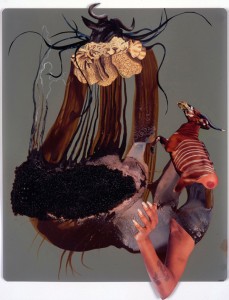
In exile: An exile. A fugitive. An INS case file….A Gikuyu speaker…A Riot Grrrl turned back to Africa…. Greg Tate opens his essay with a long list of possible terms that might define and hence limit an understanding of the artist. He runs through his own possible approaches to a body of work that he praises, in the end, for evading fixity. The artist’s own voice is presented through a substantial interview conducted by Schoonmaker. The book has full, color illustrations that include details and installation photographs. It is beautifully produced, and so permeated with Mutu’s work that it begins and ends with several text-less pages of drawings, and her work occupies both end-papers and cover. What an inspired idea. More about the catalog here. [ Mutu had a solo exhibition at Drexel’s Leonard Pearlstein Gallery in March, 2013. Read the artblog review here.–ed.]
